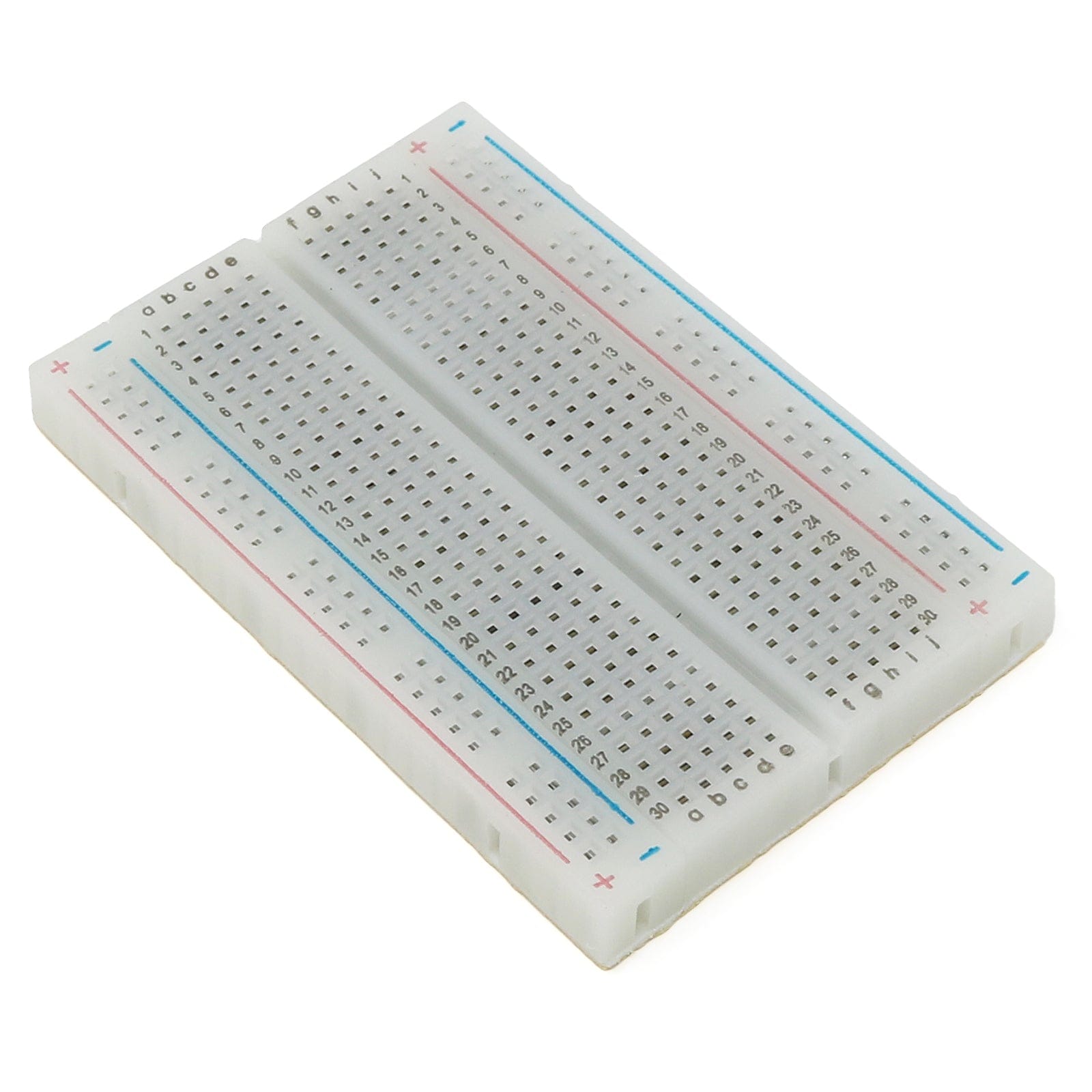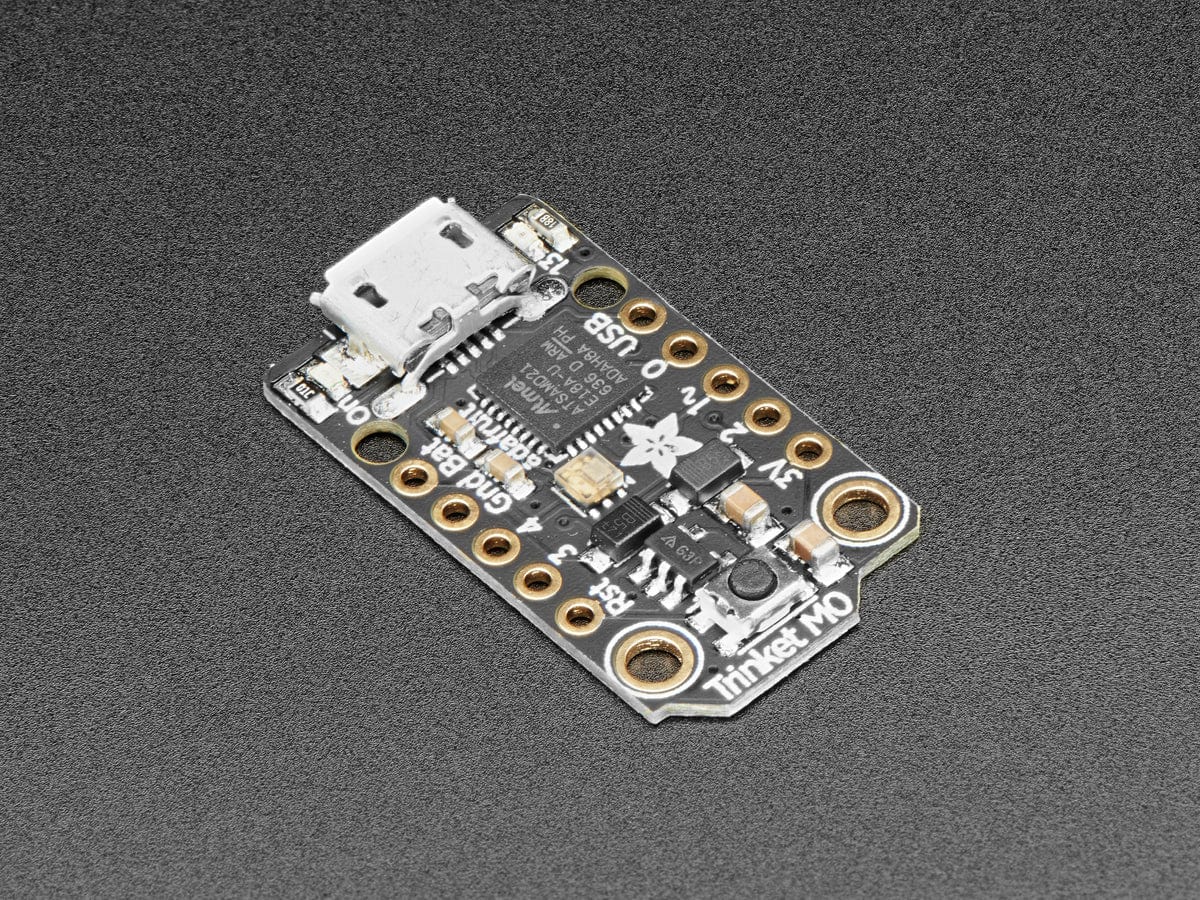


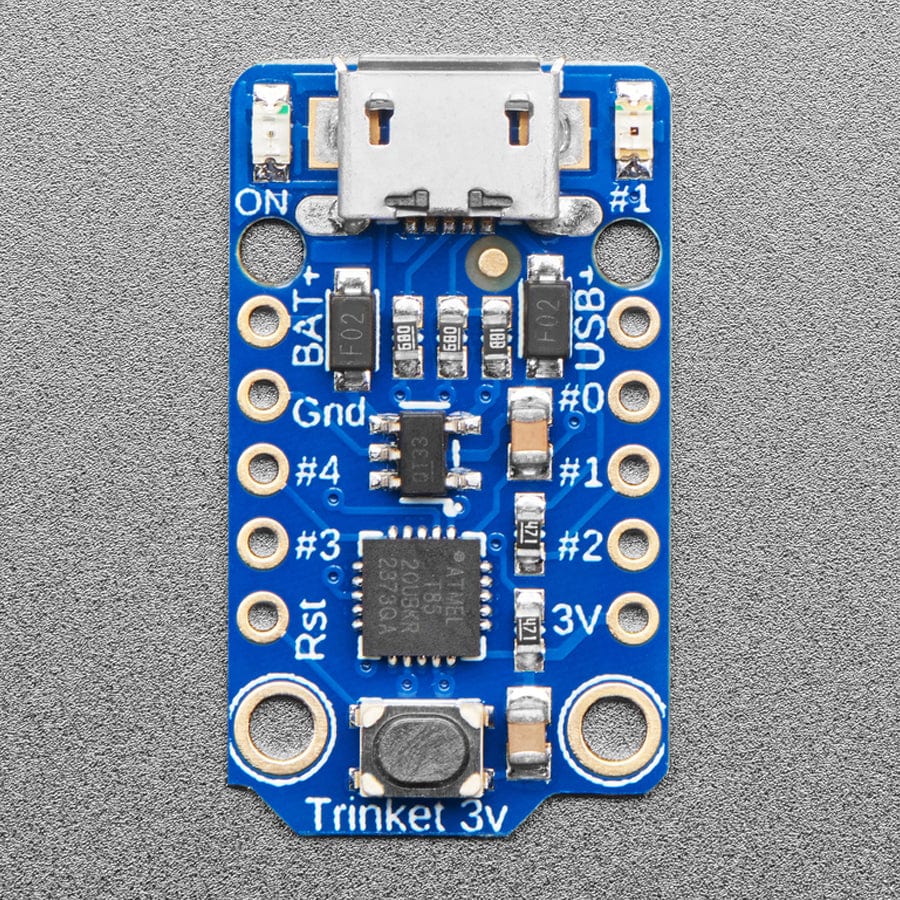


Login / Signup
Cart
Your cart is empty
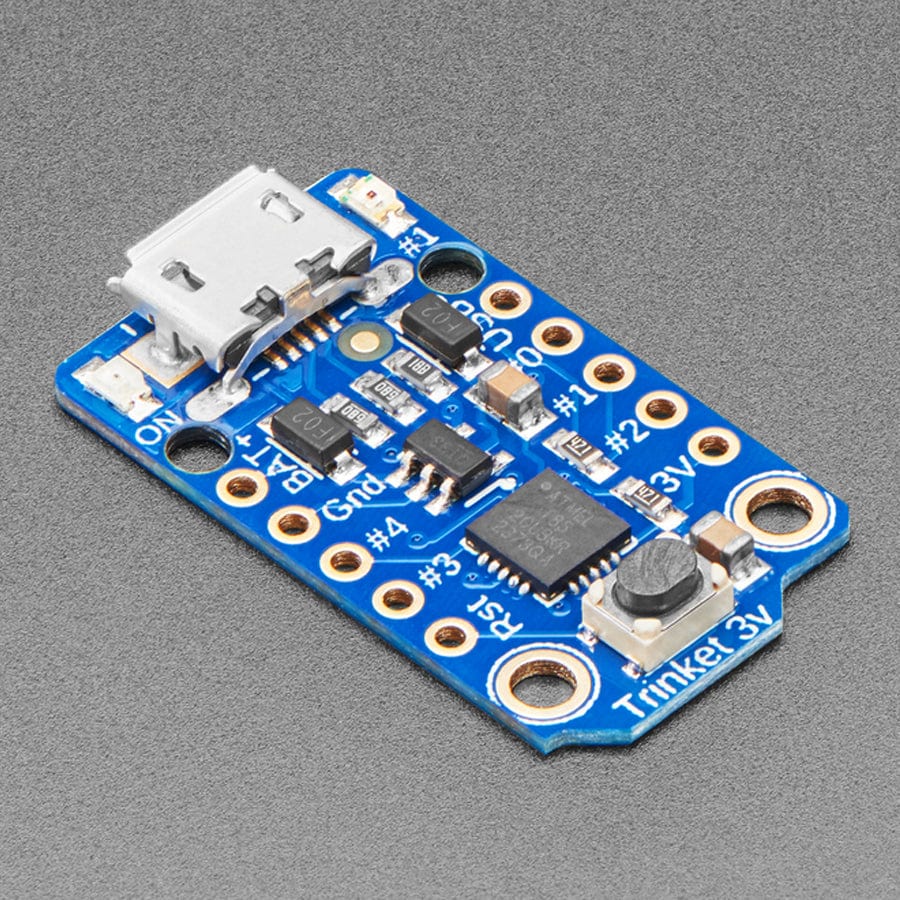
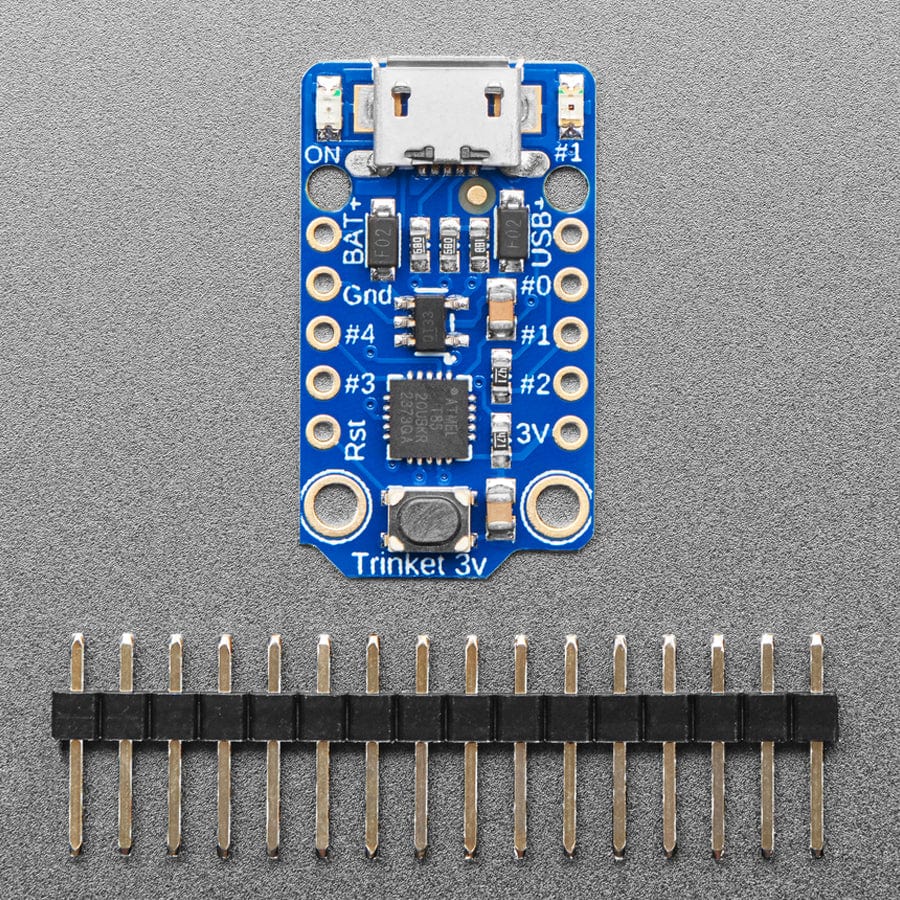




Deprecation Warning: The Trinket bit-bang USB technique it uses doesn't work as well as it did in 2014, many modern computers won't work well. So while we still carry the Trinket so that people can maintain some older projects, we no longer recommend it. Please check out the Trinket M0. It has built-in USB, more capabilities, and is comparable in price!
The trinket may be small, but do not be fooled by its size! It's a tiny microcontroller board, built around the Atmel ATtiny85, a little chip with a lot of power. We wanted to design a microcontroller board that was small enough to fit into any project, and low-cost enough to use without hesitation. Perfect for when you don't want to give up your expensive dev board and you aren't willing to take apart the project you worked so hard to design. It's our lowest-cost Arduino-IDE programmable board!
The Attiny85 is a fun processor because despite being so small, it has 8K of flash, and 5 I/O pins, including analog inputs and PWM 'analog' outputs. We designed a USB bootloader so you can plug it into any computer and reprogram it over a USB port just like an Arduino. In fact, we even made some simple modifications to the Arduino IDE so that it works like a mini-Arduino board. You can't stack a big shield on it but for many small & simple projects, the Trinket will be your go-to platform.
This is the 3V Trinket. There are two versions of the Trinket. One is 3V and one is 5V. Both work the same but have different operating logic voltages. Use the 3V one to interface with sensors and devices that need 3V logic, or when you want to power it off of a LiPo battery. The 3V version should only run at 8 MHz. Use the 5V one for sensors and components that can use or require 5V logic. The 5V version can run at 8 MHz or at 16 MHz by setting the software-set clock frequency.
Note: Breadboard is NOT included
Even though you can program Trinket using the Arduino IDE, it's not a fully 100% Arduino-compatible. There are some things you trade off for such a small and low-cost microcontroller!
Here are some useful specifications!
For a lot more details, including a tour of the Trinket, pinout details and Arduino IDE examples, check out the Introducing Trinket tutorial







